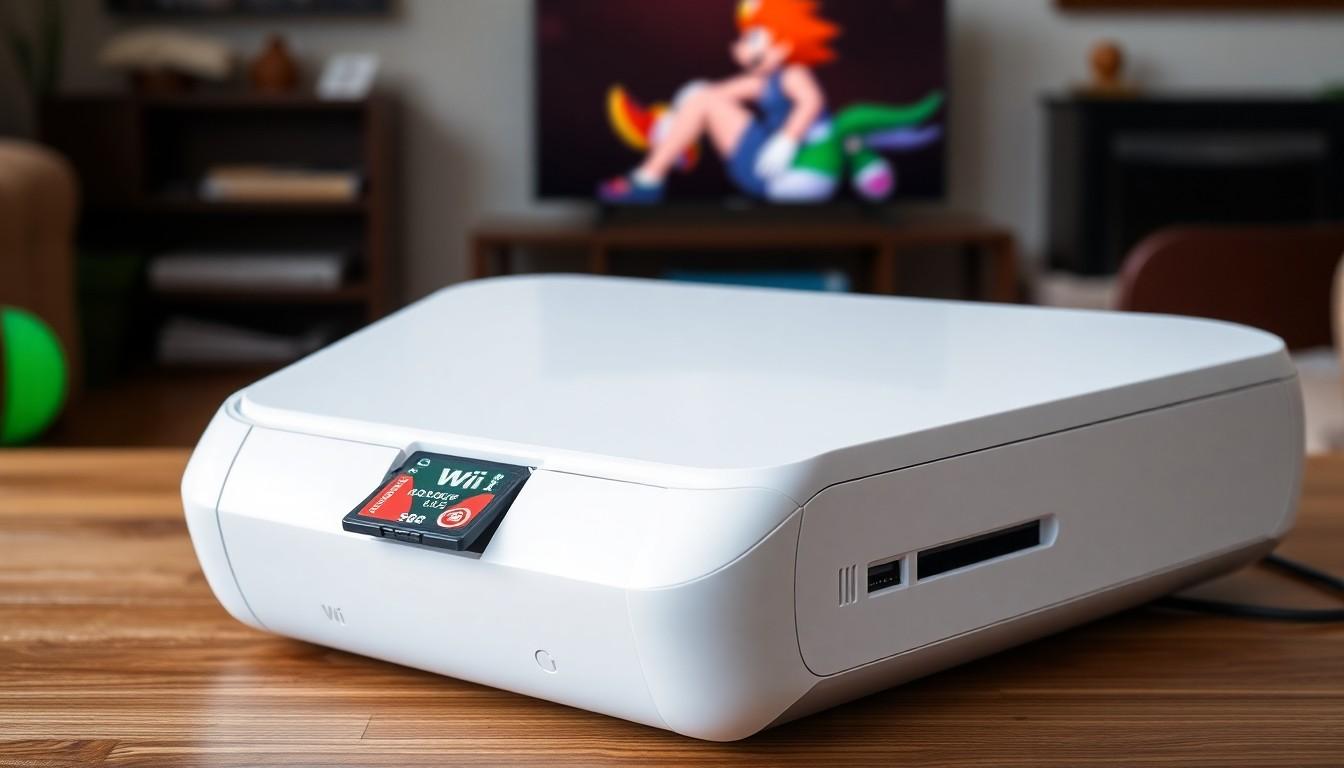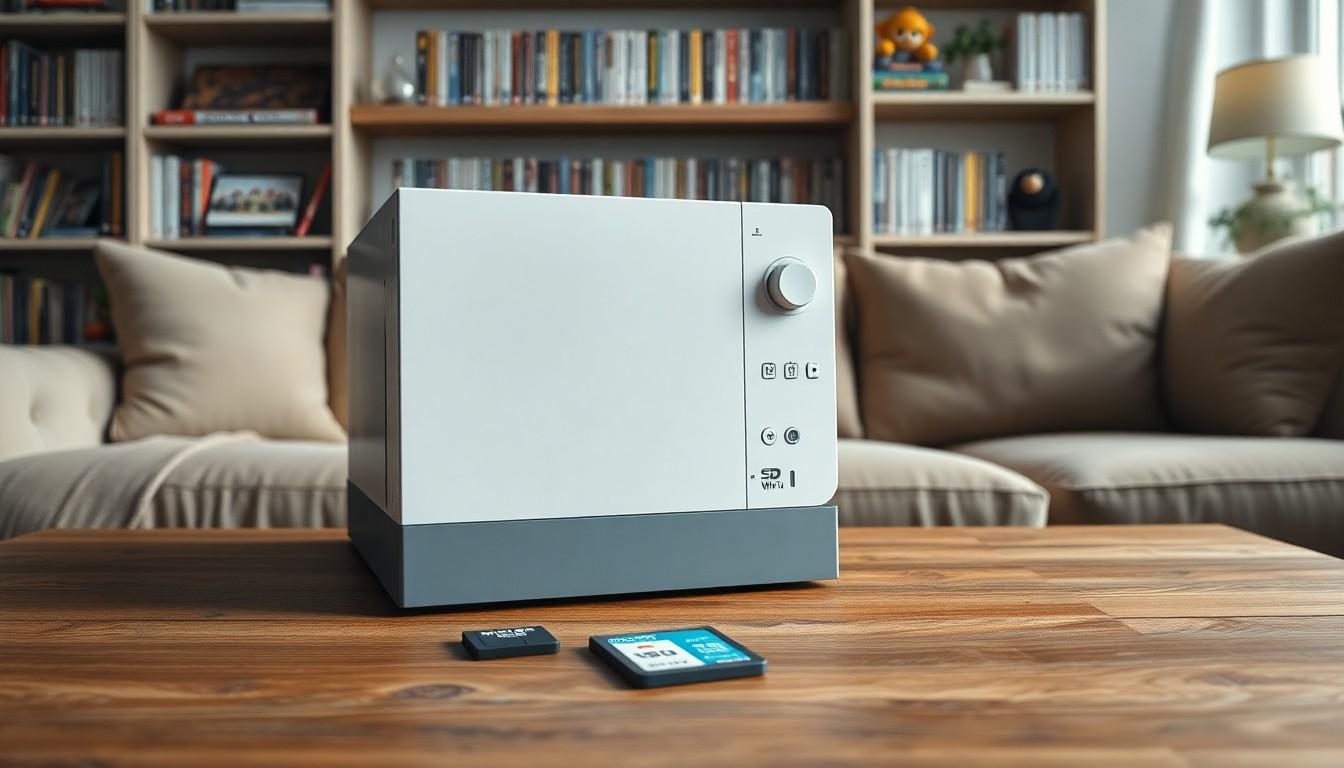In the world of gaming nostalgia, the Nintendo Wii stands out like a funky dance move at a family reunion. With its innovative controls and iconic titles, it brought countless hours of fun to living rooms everywhere. But what’s a great game without a reliable way to save progress? Enter the Nintendo Wii memory card—your unsung hero in the quest for high scores and epic adventures.
Think of the memory card as the trusty sidekick that ensures your gaming achievements don’t vanish into thin air. No one wants to relive that heart-wrenching moment of losing a hard-earned victory. With the right memory card, players can store their favorite games, unlock secrets, and keep the good times rolling. So, let’s dive into the world of Wii memory cards and discover how they can elevate the gaming experience from good to legendary.
Table of Contents
ToggleOverview Of Nintendo Wii Memory Card
Nintendo Wii memory cards serve as essential tools for gamers seeking to safeguard their progress in various titles. In comparison to other consoles, the Wii utilizes an internal memory system rather than traditional external memory cards for game saves. Players save data directly onto the console’s built-in memory, allowing seamless access to saved games without the need for additional hardware.
Developers designed the Nintendo Wii to streamline gameplay while maintaining access to saved achievements. Players can expect to store game data securely, which includes save files, downloadable content, and system updates. While the Wii itself does not require external memory cards, compatibility exists with SD cards for specific functions such as backing up data and managing game content.
An SD card offers more flexible storage solutions, accommodating a range of file types. Data management becomes easier with an SD card, as it allows players to transfer content between devices. Gamers can utilize these cards to store downloadable WiiWare titles or Virtual Console games, enhancing their overall gaming experience.
Wii’s internal memory typically supports up to 512 MB of storage. Depending on the games played, storage needs may vary. Players should keep in mind that clearing out unnecessary data and managing save files can extend the life of the available memory.
Overall, while Nintendo Wii memory cards differ from traditional formats, they play a vital role in optimizing gameplay. Utilization of SD cards in conjunction with internal memory creates a streamlined experience conducive to capturing memorable gaming moments.
Features Of Nintendo Wii Memory Card

Nintendo Wii memory plays a crucial role in enhancing the gaming experience by providing options for data storage and management. Features such as storage capacity and design ensure players can preserve their progress effectively.
Storage Capacity Options
Storage capacity for the Nintendo Wii varies based on internal and SD card memory. The console includes 512 MB of internal memory dedicated to save files. SD cards expand storage significantly, accommodating titles and content that exceed internal limits. Players can utilize SD cards ranging from 2 GB to 32 GB, depending on their needs. This flexibility permits users to manage large libraries of downloadable content seamlessly. Maintaining sufficient storage space enables efficient gameplay and smooth access to saved games.
Design And Compatibility
Design aspects of the Nintendo Wii memory options facilitate user-friendly experiences. The internal memory integrates seamlessly with games, eliminating the need for cumbersome external devices. Although traditional memory cards aren’t supported, the console allows SD card compatibility, enhancing its functionality. Players can insert SD cards directly into the console for easy access to their stored data. This design promotes convenience, encouraging gamers to back up and manage data with minimal hassle. Overall, the design and compatibility of memory storage solutions significantly enhance players’ gaming journeys.
How To Use Nintendo Wii Memory Card
Using a Nintendo Wii memory card enhances gameplay by providing additional storage and data management options. This section explains how to set up a memory card and transfer data effectively.
Setting Up The Memory Card
Setting up an SD card for the Nintendo Wii is straightforward. First, ensure the SD card is formatted to FAT32, as this format is compatible with the console. Insert the SD card into the slot located on the front of the Wii console until it clicks into place. Once inserted, the Wii automatically recognizes the card, allowing players to access additional storage for game downloads and save files. Proper initialization involves navigating to the Wii system settings where players can manage and format the card as needed, ensuring optimal performance.
Transferring Data
Transferring data between the Wii’s internal memory and the SD card is simple. Begin by accessing the Data Management menu from the Wii main menu. Players can select saved data from the internal memory they wish to move. Highlight the file and choose the option to copy or move it to the SD card. This method preserves save files while freeing up internal memory for new content. To bring data back to the internal memory, follow the same steps in reverse, ensuring important game progress remains secure and easily portable.
Advantages And Disadvantages
Nintendo Wii memory options offer various advantages and drawbacks. One significant advantage involves the internal memory, which provides an integrated solution for saving game data. Players benefit from a seamless experience, as they access their saved games directly without needing external devices. Flexibility comes with using SD cards, granting players extra storage capacity ranging from 2 GB to 32 GB. These cards accommodate a wide range of downloadable content, allowing enthusiasts to expand their gaming libraries.
Convenience also plays a role, as managing data between the Wii’s internal memory and SD card simplifies gameplay. Transferring data is straightforward, allowing players to copy or move saved files easily. Immediate access to crucial game memories enhances the overall gaming experience.
However, certain disadvantages exist. The Wii’s internal memory is limited to 512 MB, which may not suffice for players with extensive gaming collections. Players often find themselves managing save files closely to avoid running into memory constraints. Additionally, not all games allow save data transfers between the internal memory and SD cards, potentially complicating the data management process.
Potential compatibility issues can arise as well. While SD cards enhance storage capabilities, using unsupported cards may cause problems. Players must ensure their selected cards are compatible and formatted correctly before use. Ultimately, understanding these advantages and disadvantages helps players make informed decisions regarding Nintendo Wii memory options and optimize their gaming experiences.
Conclusion
The Nintendo Wii memory card options play a vital role in enhancing the gaming experience. With the console’s internal memory and the flexibility of SD cards players can easily manage their game saves and downloadable content. This combination allows for a seamless transition between gaming sessions while preserving cherished memories and achievements.
By understanding the storage capabilities and management techniques players can optimize their gameplay and ensure that their favorite titles are always accessible. Embracing these memory solutions not only enriches the gaming journey but also safeguards the hard work invested in each gaming adventure.



